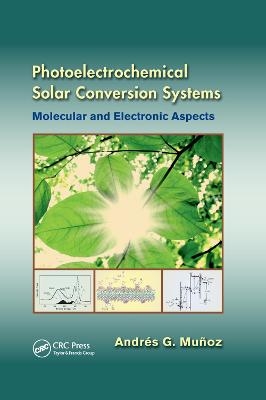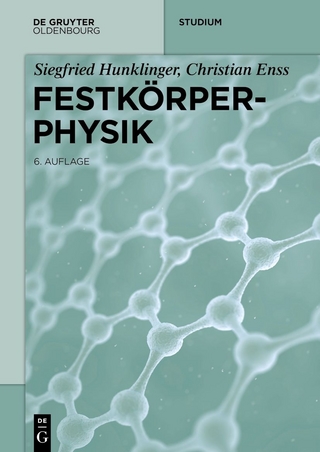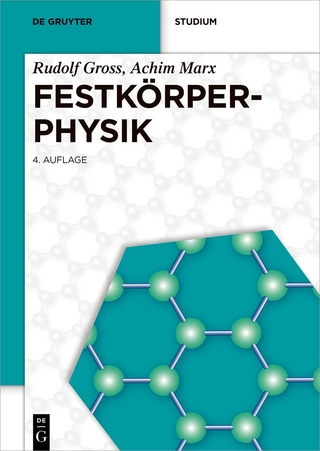
Photoelectrochemical Solar Conversion Systems
Molecular and Electronic Aspects
Seiten
2019
CRC Press (Verlag)
978-0-367-38068-7 (ISBN)
CRC Press (Verlag)
978-0-367-38068-7 (ISBN)
Providing new insights into the molecular and electronic processes involved in the conversion of sunlight into chemical products, Photoelectrochemical Solar Conversion Systems: Molecular and Electronic Aspects begins with an historical overview and a survey of recent developments in the electrochemistry of semiconductors and spectroscopic techniques. It then provides a comprehensive introduction to the science of conversion cells, reviews current issues and potential directions, and covers a wide range of materials from organic to inorganic cells.
Employing a tutorial organization with balanced coverage of electrochemistry and solar energy conversion, this book covers:
The conversion of sunlight into chemical energy and different actual conversion concepts
Electrochemical methods for the construction and characterization of electrolyte-metal-oxide-semiconductor contacts (EMOS) in the nanodimensions, the so-called nano-emitter concept, including the electrochemical formation of metal clusters of catalytic metals and the formation of passivating layers by anodization
The fundamentals of electrocatalysis with emphasis on the hydrogen evolution reaction and the electrochemical CO2 reduction
Classical and quantum mechanical theories of electron transfer reactions in metal-electrolyte interfaces and their relation with surface electronics
The physicochemical characterization of the model system Si-SiOx-metal-electrolyte by means of modern electrochemical, surface, and spectroscopic methods
Improvements of conversion efficiency by means of optical effects, for example, the generation of surface plasmons by nano-dimensioned arrangements of optically active metals
Employing a tutorial organization with balanced coverage of electrochemistry and solar energy conversion, this book covers:
The conversion of sunlight into chemical energy and different actual conversion concepts
Electrochemical methods for the construction and characterization of electrolyte-metal-oxide-semiconductor contacts (EMOS) in the nanodimensions, the so-called nano-emitter concept, including the electrochemical formation of metal clusters of catalytic metals and the formation of passivating layers by anodization
The fundamentals of electrocatalysis with emphasis on the hydrogen evolution reaction and the electrochemical CO2 reduction
Classical and quantum mechanical theories of electron transfer reactions in metal-electrolyte interfaces and their relation with surface electronics
The physicochemical characterization of the model system Si-SiOx-metal-electrolyte by means of modern electrochemical, surface, and spectroscopic methods
Improvements of conversion efficiency by means of optical effects, for example, the generation of surface plasmons by nano-dimensioned arrangements of optically active metals
Muñoz, Andrés G.
Principles and Systems in Light-Induced Energy Conversion. Nano-Dimensioned Systems Based on Semiconductor-Oxide- Metal-Electrolyte Contacts. Physics of Electrolyte-Metal-Oxide-Semiconductor (EMOS) Contacts in Nano-Dimensions. Electrocatalysis on Nano-Dimensioned EMOS Contacts. Electronics and Chemistry of Electrolytes-Metal-Oxide- Semiconductor Contacts. Optical Effects: Current Approaches and Future Directions.
| Erscheinungsdatum | 30.09.2019 |
|---|---|
| Verlagsort | London |
| Sprache | englisch |
| Maße | 156 x 234 mm |
| Gewicht | 703 g |
| Themenwelt | Naturwissenschaften ► Biologie |
| Naturwissenschaften ► Physik / Astronomie ► Festkörperphysik | |
| Technik ► Elektrotechnik / Energietechnik | |
| Technik ► Umwelttechnik / Biotechnologie | |
| ISBN-10 | 0-367-38068-4 / 0367380684 |
| ISBN-13 | 978-0-367-38068-7 / 9780367380687 |
| Zustand | Neuware |
| Haben Sie eine Frage zum Produkt? |
Mehr entdecken
aus dem Bereich
aus dem Bereich


